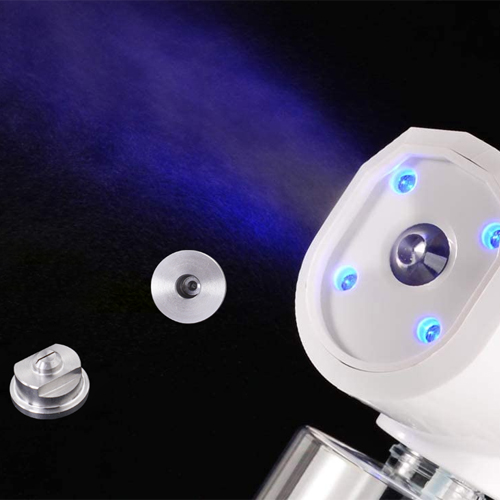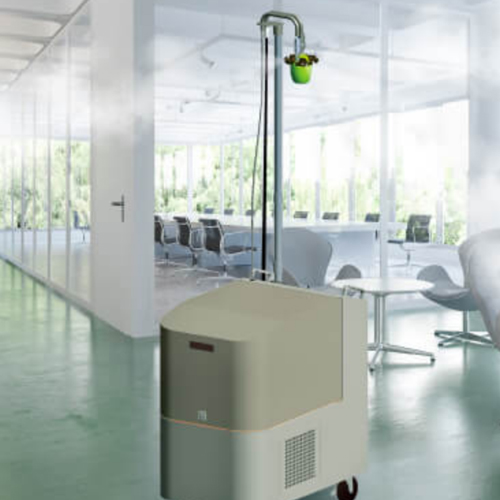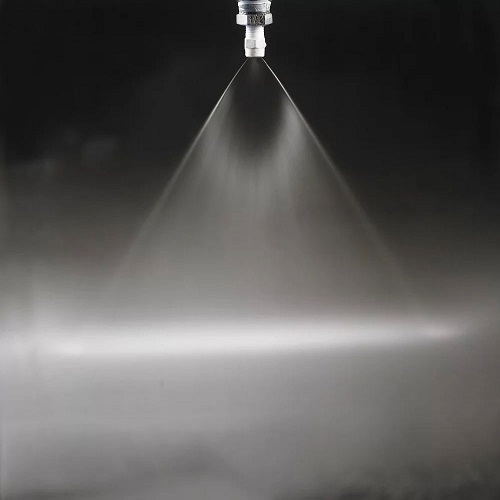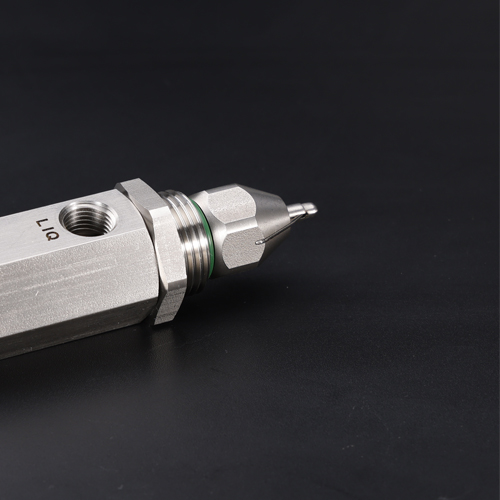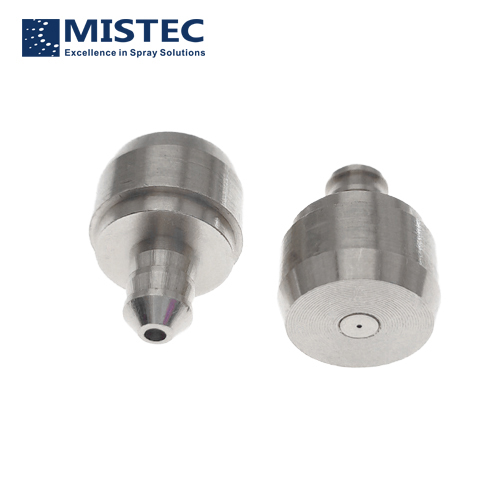Here are seven things you should know before you shop for a sanitizing nozzle
Mistec offers a variety of disinfecting nozzles (also known as disinfecting sprayers nozzle, sanitizing nozzle) to address disinfecting fluids in different industries and processes.
The following seven points are to confirm which disinfecting nozzles you need to know before using them.Please confirm your disinfection nozzle requirements step by step in the following:
The spray pattern
The spray pattern, or distribution shape, is the shape of the fluid in the vertical plane as the disinfecting nozzle delivers the liquid or gas to the target.It is the main classification feature of nozzles.
Although the spray shape varies with the spray pressure, the spray shape of most types of disinfecting nozzles can remain the same spray shape, the only variation being the difference in size and spray shape ratio.
Since each industry and process has different requirements, MISTEC offers the following different disinfection spray shapes for customers to choose from.
In general, the customer needs to take the initiative to decide which disinfecting spray shape to use.
If you have any questions about the shape of the disinfection spray, please contact us directly.
Mistec Fluid Consultants will advise you upon thorough understanding of your application.
Each disinfection nozzle manufacturer has its own naming rules and classification methods for spray shapes, which are generally similar, but there are differences in details.
If you are looking for the same product, you can confirm the shape number of the brand and provide it to MISTEC Fluid Consultant who will have us reconfirm it for you.
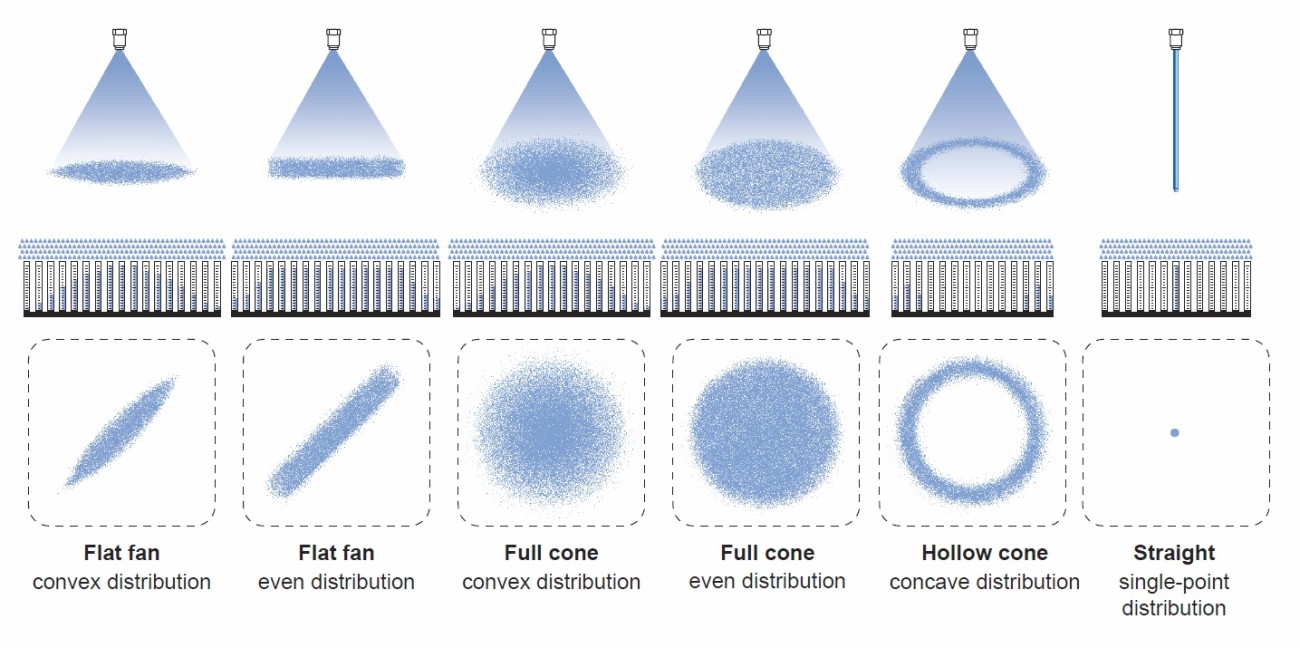
The following are the various shapes of disinfecting spray:
- Fan-shaped disinfection spray- Solid cone disinfection spray, or umbrella, cone, or solid cone
- Hollow Cone Disinfecting Spray, or Hollow Cone, Ring, Donut Shape, Hollow Cone
- Spiral disinfector spray, or mosquito coil, spiral, concentric circle, semi-solid spray. This type of nozzle is often classified as solid cone or hollow cone due to the number of layers
- Column disinfecting spray, or Straight, Spot, Straight
- Liquid stirring spray, since liquid stirring cannot form, this nozzle shape is a self-contained fluid characteristic.
There are three common types of fluids:
The pure liquidPure gas
Gas plus liquid double fluid
Material
To meet a variety of different applications, Mistec disinfection nozzles are available in a variety of materials.Due to the different processing flexibility and technology of different disinfection materials, the choice of materials for each product is also different.When considering the material of the disinfection nozzle, please consider the following variables:- The temperature and environment of the fluid
- Whether there are large amounts of solids in the fluid
- Whether there are chemicals
- Whether cleanliness is required in use: If yes, choose a nozzle with no rubber seal ring
- Whether mechanical strength needs to be considered
Is there a standard material in the industry standard? For example, stainless steel is commonly used in the food industry
- The following is a brief introduction to the nozzle characteristics of various materials

The Connector
Mistec provides a variety of disinfecting nozzle connections.Of all the connection methods, the external mouth (or male teeth) is the largest.
Other connection methods include internal thread mouth (or internal thread mouth), flange mouth, welding mouth, welding mouth can also be subdivided according to whether there is a disinfection nozzle or spray plate positioning.
Disinfection nozzles are generally designed with taper threads, also known as "taper threads", mainly to prevent water leakage.
However, to be fully leakproof, you also need to "tape seal" or "seal".
Only with ", or sealant can achieve the effect.
Parallel teeth common in other industries are rare in nozzles due to the need to prevent leakage.
Generally there are two common taper thread specifications, one is NPT thread one is common in North America, the other is common elsewhere in the BSPT thread, also known as PT thread.
In general, the larger the nozzle, the larger the joint.
The choice of flow angles offered varies from connector to connector, please refer to the instructions on each product page for details.
Pressure
For nozzles, the pressure provided by the disinfecting spray system is the most important factor in determining nozzle performance.The same disinfection nozzle, under different pressure, spray shape, flow, Angle, distribution and particle size will be different.
As a result, each nozzle is designed with a so-called "standard operating pressure" that defines nozzle performance.
For example, if the nozzle Angle is 110 degrees at 3 kg/cm^2, the Angle may be less than 100 degrees if used at 1kg/cm^2.
Therefore, before choosing a sterilizing nozzle, if you can confirm the pressure that can be supplied to the nozzle, you can save a lot of valuable time.
Most disinfection nozzles do not actively pressurize, but rely on pump pressure to the equipment or plant pipes.
When determining pressure, take the gauge reading nearest to the nozzle as the main factor, if possible.
The further the gauge is from the nozzle, the greater the influence of the conduit and other elements in the center on the pressure.
Different industries and countries habitually use different units of pressure.
Common pressure units are as follows
The flow
Flow, also known as spray volume or spray volume, is the volume of liquid or gas ejected from a disinfecting nozzle at a certain pressure over a certain period of time.In general, for the same disinfection nozzle, the higher the pressure, the greater the flow.
The change of nozzle flow under different pressures is not linear, but roughly proportional to the square root of the pressure.
The relation is as follows: QA/QB =√ PA/PB
Different industries and countries use different traffic units.
The following are common traffic units:
The Angle
The spray Angle (or spray Angle) of a disinfection nozzle is the Angle at which the gas or liquid appears near the nozzle after leaving the nozzle.Since the further away the fluid is from the nozzle, the greater the influence of gravity and other surrounding liquids and gases, the Angle may increase or decrease with distance.
In other words, the Angle information can only be used as an index to evaluate the nozzle coverage width or area.
Keep this in mind when designing the distance between nozzles and to the object being sprayed.
If your system requires a spray distance of several meters or millimeters (mm), please contact us to ensure that nozzle performance meets your needs.
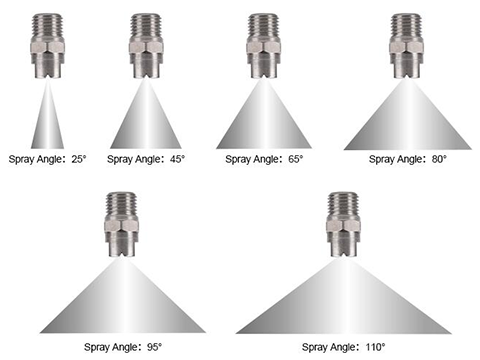
Also note that the Angle of the disinfection nozzles in different directions varies with distance.
In general, as you spray from the top down, the Angle will get smaller and smaller.
As you spray from the bottom up, the Angle gets bigger and bigger.
Therefore, in the design of spraying equipment must be taken into account.
We guarantee the Angle tolerance of the MISTEC nozzle to be plus or minus 5 degrees at standard operating pressure.
So please take this into consideration when designing nozzle spacing.


